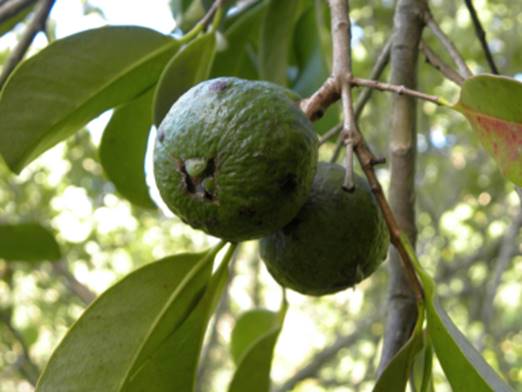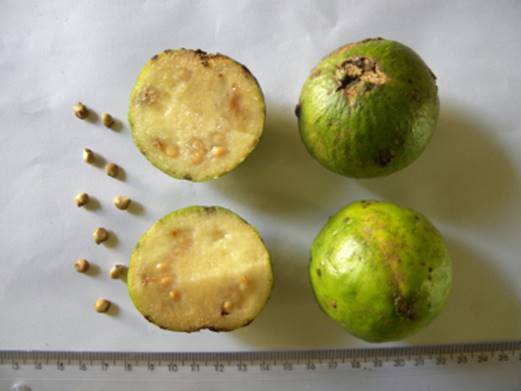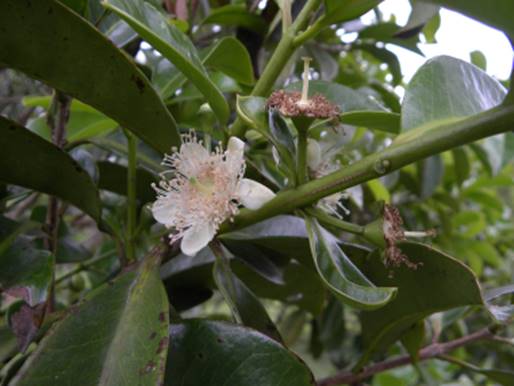ARAÇA-AÇU (Psidium arboreum) Nr. 2 - 1 potted seedling / 1 getopfter Sämling
ARAÇA-AÇU (Psidium arboreum) Nr. 2 - 1 potted seedling / 1 getopfter Sämling
Family / Familie: Myrtaceae
origin from / Herkunft: Brasil / Brasilien
Climate / Klima: temperate to warm (10-25C / 50-77F) / gemäßigt bis warm (10-25C / 50-77F)
Taste / Geschmack: good taste / guter Geschmack
you buy / sie kaufen: 1 small potted seedling / 1 kleiner, getopfter Sämling
Delivery EU only
This very rare guava comes from the collection of the Brazilian collector Helton Muniz.
ARAÇA-AÇU – comes from the Tupi Guarani language and means "fruit with eyes" due to the permanent sepals, and the adjective "Açu" refers to the size of the fruit.
This guava is native and endemic to the Atlantic Rainforest of the state of Rio de Janeiro, Brazil.
The fruits are spherical berries with a diameter of 5 to 8 cm, containing a greenish-white, creamy, sweet and sour pulp.
This slow-growing but very robust plant of tropical origin has adapted very well to the subtropical climate with low temperatures (it can tolerate short-term frost down to -3 degrees Celsius).
It prefers sunny to partially shaded locations.
Please overwinter at a minimum temperature of 10 degrees Celsius.
Diese sehr seltene Guave stammt aus der Sammlung des brasilianischen Sammlers Helton Muniz.
ARAÇA-AÇU – kommt aus der Tupi Guarani Sprache und bedeutet „Frucht mit Augen“ aufgrund der bleibenden Kelchblätter und das Adjektiv Açu weist auf die Größe der Frucht hin.
Heimisch und endemisch ist diese Guave im Atlantischen Regenwald des Bundesstaates Rio de Janeiro, Brasilien.
Die Früchte sind kugelige Beeren mit einem Durchmesser von 5 bis 8 cm, die ein grünlich-weißes, cremiges, süß-saures Fruchtfleisch enthalten.
Langsam wachsende, aber sehr robuste Pflanze tropischen Ursprungs, die sich jedoch sehr gut an das subtropische Klima mit niedrigen Temperaturen angepasst hat (sie kann kurzfristigen Frost bis zu -3 Grad vertragen).
Sie bevorzugt sonnige bis halbschattige Standorte.
Bitte bei mindestens 10 Grad überwintern.






